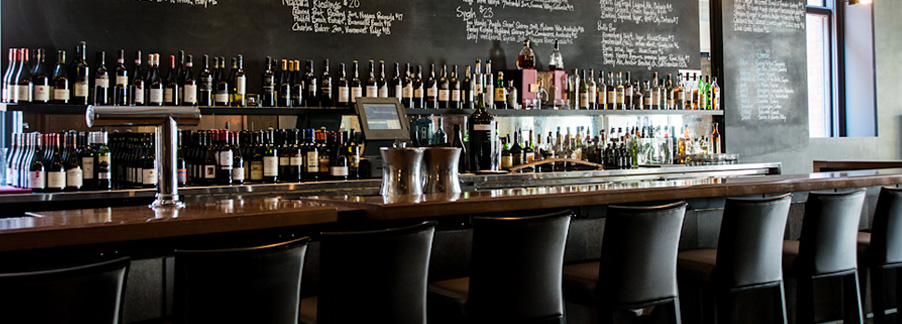 Ryan Campbell, formerly sommelier at Toronto’s Crush Wine Bar, now works with the wine lists at the parent company, Vintage Hotels in Niagara.
Ryan Campbell, formerly sommelier at Toronto’s Crush Wine Bar, now works with the wine lists at the parent company, Vintage Hotels in Niagara.
Wine is such a big part of your restaurant, how do you ensure that your staff, who aren’t sommeliers, are still knowledgeable?
We hold an informal “wine school” once a month for about 15 staff members. For the last class, we focused on chardonnay with a vertical tasting. Vertical tastings mean one type of wine, like chardonnay, from different producers, but all from the same vintage.
A horizontal tasting would be, say chardonnays, all from one producer, but of different vintages. That side-by-side comparison is a great way to learn about wine.
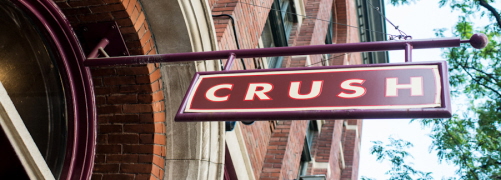 We all make professional tasting notes and discuss the wines’ appearance, nose, palate, age, region and quality level. These interactive sessions are more engaging for employees, and we all learn from one another’s observations and questions.
We all make professional tasting notes and discuss the wines’ appearance, nose, palate, age, region and quality level. These interactive sessions are more engaging for employees, and we all learn from one another’s observations and questions.
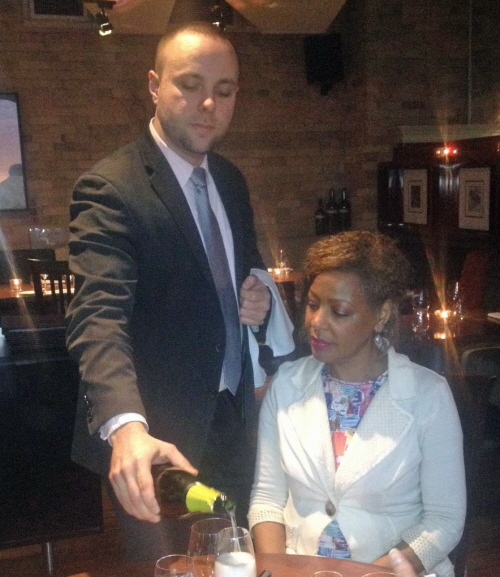 Which chardonnays did you taste? Was there a favourite?
Which chardonnays did you taste? Was there a favourite?
We tasted three chardonnays that had a great variation of style so that we could see just how versatile this wine can be:
Herve Azo Petit Chablis, Burgundy, France, 2011
Norman Hardie, Chardonnay, Prince Edward County, Ontario 2011
Justin Chardonnay, Central Coast, California, 2011
The staff consensus was for Norman Hardie as the favourite. His use of French oak is deft and his wines have an attractive medium body. Some of the staff had met him, which also helps.
What’s been the most memorable tasting for your staff recently?
We often open wines that we have in our cellar, but that aren’t selling. Recently, we tried the 2003 Tom Eddy Cabernet Sauvignon from Napa Valley, California. It’s priced at $335 on our list, and offers aromas of leather, black currant and cedar.
The palate has moderate tannins and acidity, which is both surprising and delightful for an even-year-old Californian cabernet. The wine is still very much alive with blackberry nuances and warming spice on the finish.
Since that tasting, we’ve sold all of our stock for that wine, which had been in our cellar for years. The staff members are interested and excited about wines that they can try and share that experience with diners, rather than just staring at a label.
What wine tastings do you offer to your customers?
Members of our “Club Crush” are invited to informal tastings with wine producers in our bar lounge. The events offer our customers a chance to meet with wine producers and suppliers and ask them questions about their wines, if they wish. We also provide some food for the tastings. Club Crush takes place the last Wednesday of every month and only requires an email to sign up.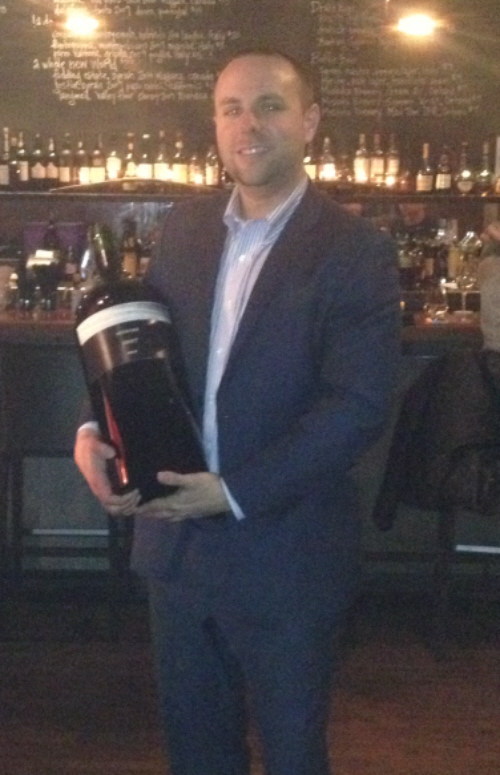
Which wines did you taste recently with the Crush Club?
When hosting tastings for our customers, I arrange the wines from lightest to fullest in body and weight so that one wine doesn’t overwhelm the next one. Our recent tasting offered full-bodied red wines from various regions:
Domaine Fontavin, Grenache Blanc/Roussanne, Chateauneuf-du-Pape, France
Clarendon Hills, Mourvedre “Liandra”, Clarendon, Australia
Miguel Torres, Mas La Plana Cabernet Sauvignon, Penedes Spain
Zyme, Amarone della Valpolicella, Veneto, Italy
Cordero di Montezemolo, Barolo Chinato, Italy
Who was one of the recent winemakers to visit?
Francois Morrisette, the winemaker for the boutique Niagara winery Pearl Morrisette, shared interesting stories about his studies in Burgundy and cultivation of vines in Niagara.
He’s currently experimenting with cabernet franc and is excited about upcoming vintages. When I asked why his wines weren’t in most LCBO stores, he told us that he sold out all of his production with the SAQ.
When choosing a wine course, what should you look for?
1. The structure and breadth of the course
2. The budget for the wines to be tasted in class
3. The history and credentials of the instructor
4. The reputation of the organization as a whole, worldwide
5. The pass rate for full completion of the program
Do you think sommeliers in restaurants should have formal credentials to be called such?
Sommeliers are masters of beverage; in-depth courses are designed to aid in that process. Many employers will not hire individuals unless they have certification. However, I would also consider hiring those who work their way up to assuming the responsibilities of sommeliers within the company, by running a profitable and interesting wine list.
Which professional credentials do you respect the most and why?
The International Sommelier Guild (ISG) as the pass rate is a minimum of 70% on all aspects of the course. For the exam, you must write ten in-depth essays, taste 24 wines blind (you write tasting notes without being able to see the bottle label, answer 200 multiple choice questions, undergo a service exam, and design a restaurant list with a restaurant budget. This course gets you ready for all aspects in real world scenarios.
Now that you have your sommelier certification, how do you continue to learn about wine?
I read articles online, watching YouTube videos, sharing notes on social media.
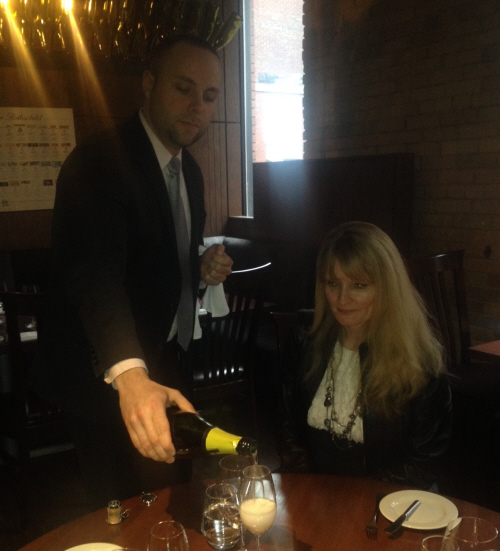 Which wines intrigue you right now?
Which wines intrigue you right now?
Slovenian wineries in the modern market place, such as Movia, which takes a modern twist on sparkling wine, Puro. It’s a sparkling wine that is still resting on its lees from second fermentation. The lees are the natural sediment that falls out from the wine over time.
The bottles are stored upside down and disgorging is done at the table under water. The technique adds to the showmanship of opening sparkling at the table. I use a gueridon (tableside trolley) and a champagne ice bucket filled with water.
Then I remove the bottle from its casing as well as the capsule while the bottle is still upside down. I submerge neck of bottle under water and use a wine opener to remove the cage. When all the lees have disgorged, I turn the bottle right side up and it’s ready for service.
What insider tips can offer for choosing from a restaurant list to readers?
When indulging in wine by the bottle, if there is a similar wine that costs just a little bit more, spend that little bit extra because there is often much better value. If you see a wine you don’t recognize, ask the waiter or sommelier about it. Trying something new may surprise you.
Describe your wine list.
We offer 700 different labels by the bottle and 46 wines by the glass, including a rare red wine made from Grisola by Pirro Varone, Puglia. There is a wide variety of price points and many different styles of wine on our list.
Our most expensive 750 ml bottle is Chateau Haut Brion, Pressac-Leognan 2005 for $3200. We also have a magnum (1500 ml) of Chateau Margaux 99 for $3600 and a 9-litre bottle of Stratus Vineyards Red 2007, Ontario, Niagara for $1950.
What was the most surprising fact you uncovered while researching your wine list?
I was surprised to discover the great quality of dessert wines out of California. Currently, we offer:
Botrytis affected Sauvignon Blanc by Voss, Rutherford Napa 2005
Late Harvest Zinfandel by Carol Shelton, Sonoma
Justin Obtuse, Fortified Cabernet Sauvignon, 2011, Paso Robles
What’s the biggest trend among Ontario wines in the last 2-3 years?
The appassimento winemaking process of making passito-style wines in Ontario. Colaneri is one of my favourite producers in Niagara. I have never been disappointed by the winemaker, the staff or the family that runs Colaneri.
Northern Italy’s Veneto region developed this technique originally of drying red wine grapes on straw mats in a temperature- and humidity-controlled rooms for 3-4 months. The grapes lose 30-40% of their water, so this concentrates their flavours and sugars, which translates into more robust, flavourful wines.
The base for Amarone, a robust dry red wine, and for Recioto, a robust, sweet red wine, is created using Corvina, Rondinella, Molinara and Corvione grapes that are dried on mats before fermentation.
Ontario has similar climate to Veneto that makes this process ideal for us as well. Different grapes are used here such as Cabernet Sauvignon, Cabernet Franc and Pinot Grigio. Often with much shorter drying times. Some Old World grapes have been grafted in Ontario, but cultivation is still in the research phase.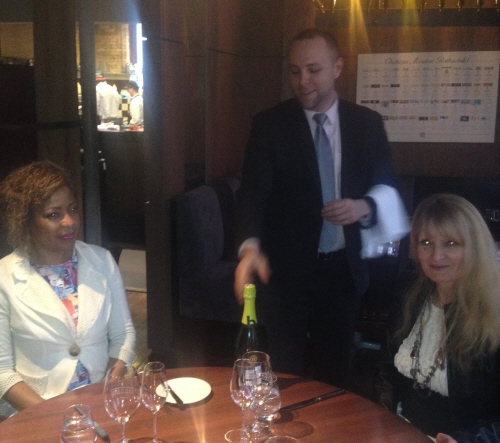
Describe some of the best food and wine pairings you’ve tasted.
Fritto misto, a mixed seafood plate of oysters, shrimp, ceviche, with Roero Arneis, a crisp Italian white wine that has aromas of citrus, apple, med light, med high acidity, very nice with a light seafood plate.
Jerked hen with mustard greens, poached dumplings, spicy corn cream garnished with plantain chips and an off-dry German riesling with strong acidity to cut the fat and enough sweetness to counteract the spicy and saltiness of this dish.
Duck confit with ginger orange master stock and duck caramel sauce and the Mary Edwards Pinot Noir from California’s Russian River Valley had sweet modern elements of cherry aromas and more fruit forward style of Pinot Noir.
What’s the strangest wine and food pairing you’ve tried?
Fried chicken and Sauternes, the Bordeaux dessert wine. Sauternes, a classic pairing with rich and fatty foie gras, works really well with deep fried chicken as well.
What famous people have dined in your restaurant?
Roger Federer, Patrick Quinn, Wayne Gretzky, Shania Twain
What bottles would be in your dream cellar? Why?
A lineup of Quintarelli wines from Italy. They are handmade, artisanal, high-quality wines. Winemaker Giuseppe Quintarelli’s careful selection of grapes and long history for quality production make his wines superb.
Although many are produced Denominazione di Origine Controllata (DOC) quality designated wines, there are also fine Indicazione geografica tipica (IGT) wines which add to the variety.
Quintarelli was a pioneer of the IGT movement in Italy back in the 1970s: this was a quality classification that allowed more freedom for winemakers to experiment. I’d love to talk to him about the politics of that movement.
We opened some Quintarelli Cabernet Franc 1993 one night near Christmas: it was extraordinary.
What are you up to in 10 minutes, 10 months and 10 years from now?
10 minutes: I’m calling the pass on the hot line
10 months: wine tasting in Napa Valley, learning to speak German
10 years: tending to vines in the Mosel River Valley. I’m very interested in the cultivation side of the business.
What special bottle is in your personal wine cellar right now?
Joseph Drouhin Clos de Vougeot Grand Cru 2006. Not the most glamorous of all Burgundy, but was given to me from a very special person. I’ll drink it soon with her because wine for me is about sharing the moments with people whose company you really enjoy.
Crush Wine Bar
455 King Street West
Toronto Ontario
M5V 1K4
416 977 1234
www.crushwinebar.com
You may also enjoy these interviews with other top-notch sommeliers.







